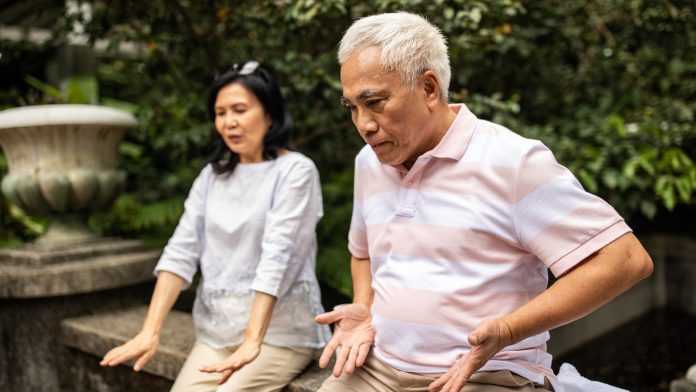
A new study finds stroke survivors practising seated Tai Chi exercises had equal or a greater improvement in their recovery process.
Tai Chi exercises fuse both martial arts and meditation to find a sense of peace and improve physical health. For this study, stroke survivors were tasked to perform a seated form of Tai Chi during their recovery and they demonstrated improvement in hand and arm strength, range of motion in shoulders, balance control, depression symptoms, and activities of daily living after three months, compared to standard rehabilitation approaches.
According to the NHS, standard stroke recovery typically includes support from physiotherapists, psychologists, occupational therapists, speech and language therapists, dietitians, and specialist nurses and doctors.
The research can be found in Stroke.
The recovery process following a stroke
The American Heart Association’s/American Stroke Association’s Guidelines for the Early Management of Patients with Acute Ischemic Stroke recommend people start stroke rehabilitation within seven days and continue for up to six months after a stroke.
However, many survivors opt-out of rehabilitation therapy because they lack physical stability or are unable to fully use their arms. The Association also notes in a Scientific Statement about Physical Activity and Exercise Recommendations for Stroke Survivors that flexibility and muscle strength training, including yoga and Tai Chi, are reported to be beneficial for stroke survivors in improving balance, quality of life, and mental health while reducing the fear of falling.
The research team developed a seated routine that comprises Tai Chi exercises for people who recently had an ischemic stroke (blocked blood vessel to the brain) and experienced hand and arm weakness or partial paralysis.
“Tai Chi has a long history as a form of exercise in China. We revised the Tai Chi movements for people who have weakness or partial limb paralysis. It is tailored so that participants can move one arm with the help of the healthy arm,” said Jie Zhao, PhD, lead study author, and a lecturer at Yunnan University of Traditional Chinese Medicine in Yunnan, China.
Intervening with Tai Chi exercises
The study was conducted at two traditional Chinese medicine hospitals in Kunming China. Researchers recruited 160 adults with an average age of 63 years; 81 men and 79 women who had suffered their first-ever ischemic stroke within six months of joining the study, and retained their use of at least one arm. The study participants were split into two groups: half were randomly assigned the seated Tai Chi exercises and the other group practised a standard rehabilitation exercise programme (hospital-recommended upper limb movements; the amount, implementation strategies, and caregiver responsibilities were similar to the Tai Chi group).
The Tai Chi exercise group received training from a qualified instructor for one week during hospitalisation and a self-guided video to practice at home three days a week for 11 weeks. The control group received a self-guided standard exercise programme for 12 weeks. By the end of the exercise intervention, 69 people completed the sitting Tai Chi exercise programme and 65 completed the standard programme. Physical function and psychological state were measured via questionnaires and assessments at various times during the study and the researchers discovered:
- Those in the sitting Tai Chi group had better hand and arm function, and better sitting balance control, compared to those in the standard stroke rehabilitation group;
- The participants in the sitting Tai Chi group had significant reductions in symptoms of depression, and better shoulder range of motion and demonstrated significant improvements in activities of daily living and quality of life compared with the control group;and
- More than half the people in the Tai Chi group continued to practice after the 12-week intervention. Improvement in these measures continued during the four-week follow-up period for the Tai Chi group.
One of the limitations from this study is that it was only conducted in two centres. In addition, the physicians and health care professionals at the centres are trained in traditional Chinese medicine and are supportive of the study, so the results may not be representative of the rehabilitation available to stroke survivors who receive care at other hospitals.









